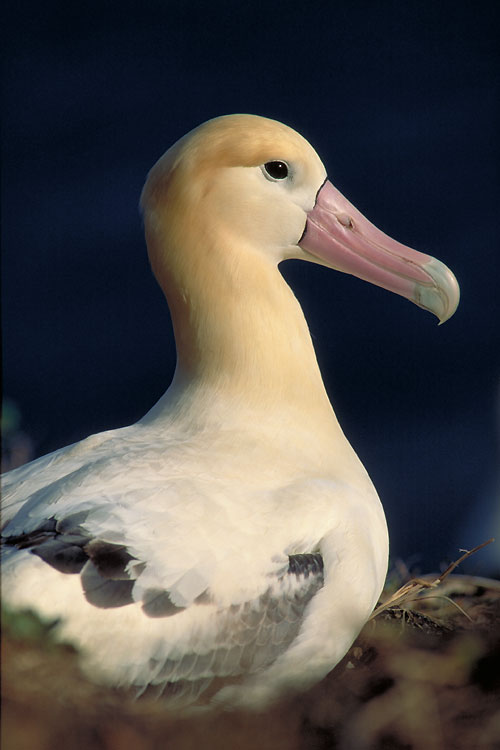Amelia O’Connor has completed a thesis towards the degree of Master of Science in Marine Resource Management at the USA’s Oregon State University, studying the movements of young Short-tailed Albatrosses Phoebastria albatrus at sea.
The thesis abstract follows:
“Short-tailed albatrosses (Phoebastria albatrus, hereafter "STAL") migrate throughout the North Pacific, overlapping with multiple large scale fisheries. In the Bering Sea, documented bycatch of this species is a focal conservation concern, due to the fact that this species is listed as "endangered" under the U.S. Endangered Species Act. We conducted the first year-round tracking study of immature (≤3 years) STAL, an understudied age class, between 2008 and 2012. We quantify seasonal distributions and fisheries associations. Our findings highlight regional differences in distributions and areas of high vessel associations within the Bering Sea. We examined travel distances across seasons and bird demographics, seasonal ranges of birds, and whether core use areas differed among ages, sexes, or source colonies. Source colonies include Torishima, the main STAL colony, and an anticipated new colony on Mukojima where birds were translocated and hand-reared. Linear mixed models (LMM) were used to evaluate travel distances across temporal and demographic (sex, age, and source colony) variables. Kernel density estimations (KDE) were used to quantify range and core areas. These areas were further analyzed using overlap indices. Regional variations were found in core areas of sexes and age classes. Moreover, STAL in first year of flight have a broader distribution than other ages, which may suggest a period of learning foraging skills or exploratory movements. We also found no concerning differences in year-round distributions between colonies (which included translocated and non-translocated birds), and documented via satellite tracking an initial return to Mukojima by a three year old translocated bird. In the Bering Sea, we examined seasonal distributions and STAL association with Bering Sea/Aleutian Island fisheries. Associations (defined here as STAL locations within 2 hours and 10 kilometers from a vessel setting gear), were quantified spatially and examined with a LMM. STAL-vessel associations occurred year round but predominately during summer and fall months along shelf-break and near canyon habitats. Additionally, the relative abundance of associations with longline vessels vs. other gear types increased from summer to fall, when most STAL bycatch was documented. While greater vessel associations and one bycatch event did occur within STAL high use areas, STAL bycatch during this study period occurred in areas of low longline association. We also did not find variations in fisheries association between translocated and non-translocated STAL.”

Short-tailed Albatross,photographed by Hiroshi Hasegawa
Reference:
O’Connor, A.J. 2013. Distributions and fishery associations of immature short-tailed albatrosses (Phoebastria albatrus) in the North Pacific. Master of Science thesis, Oregon State University, Corvallis, USA. 73 pp.
John Cooper, ACAP Information Officer, 7 September 2-13

 English
English  Français
Français  Español
Español